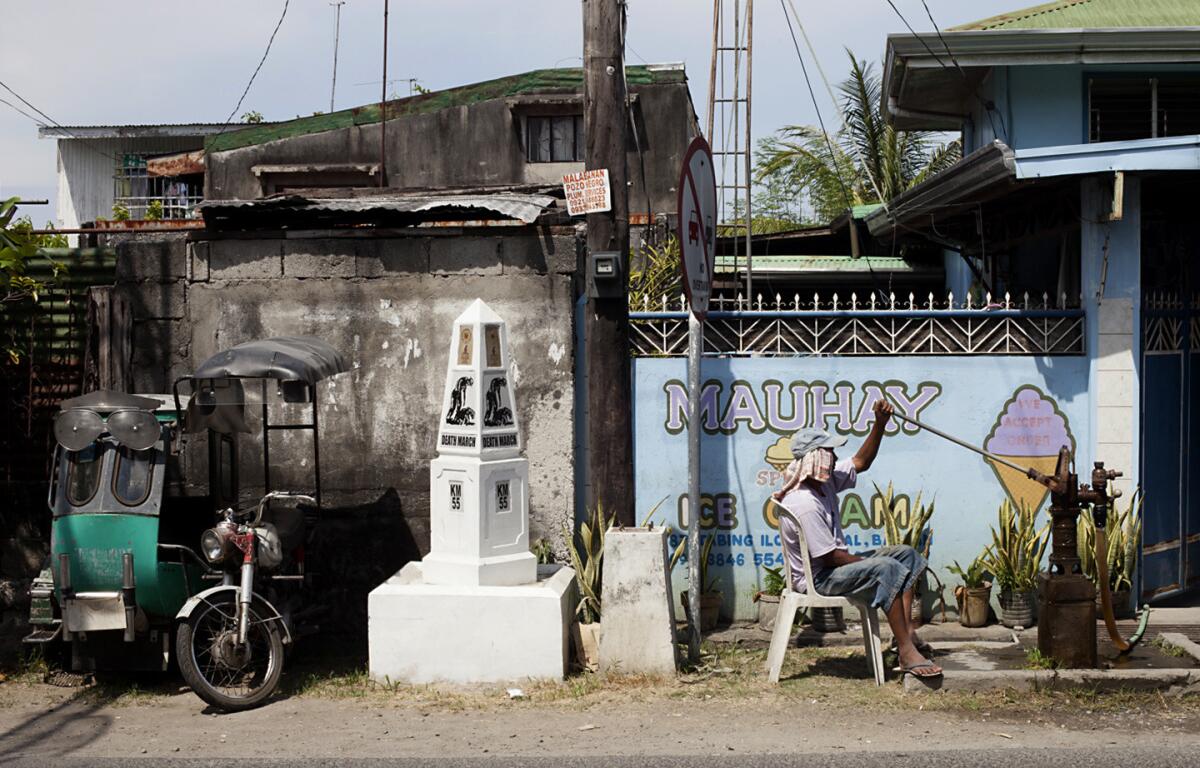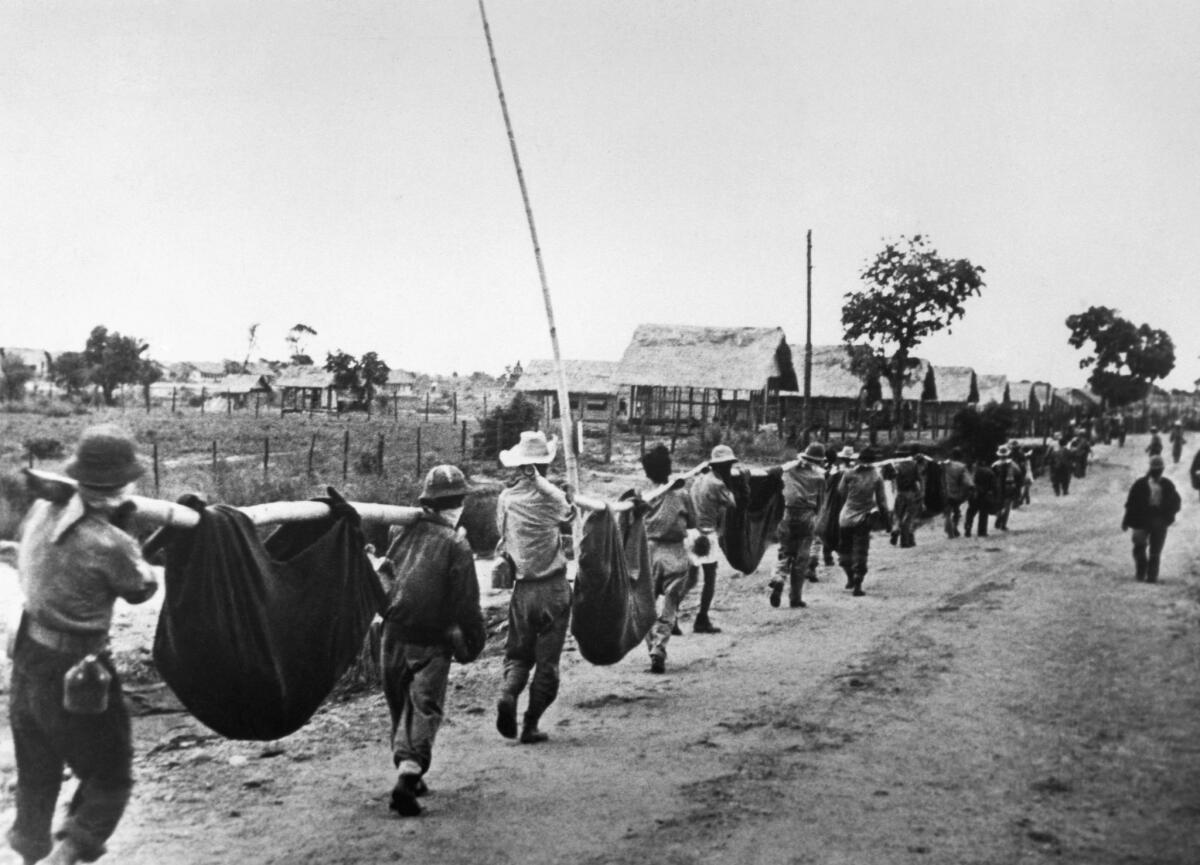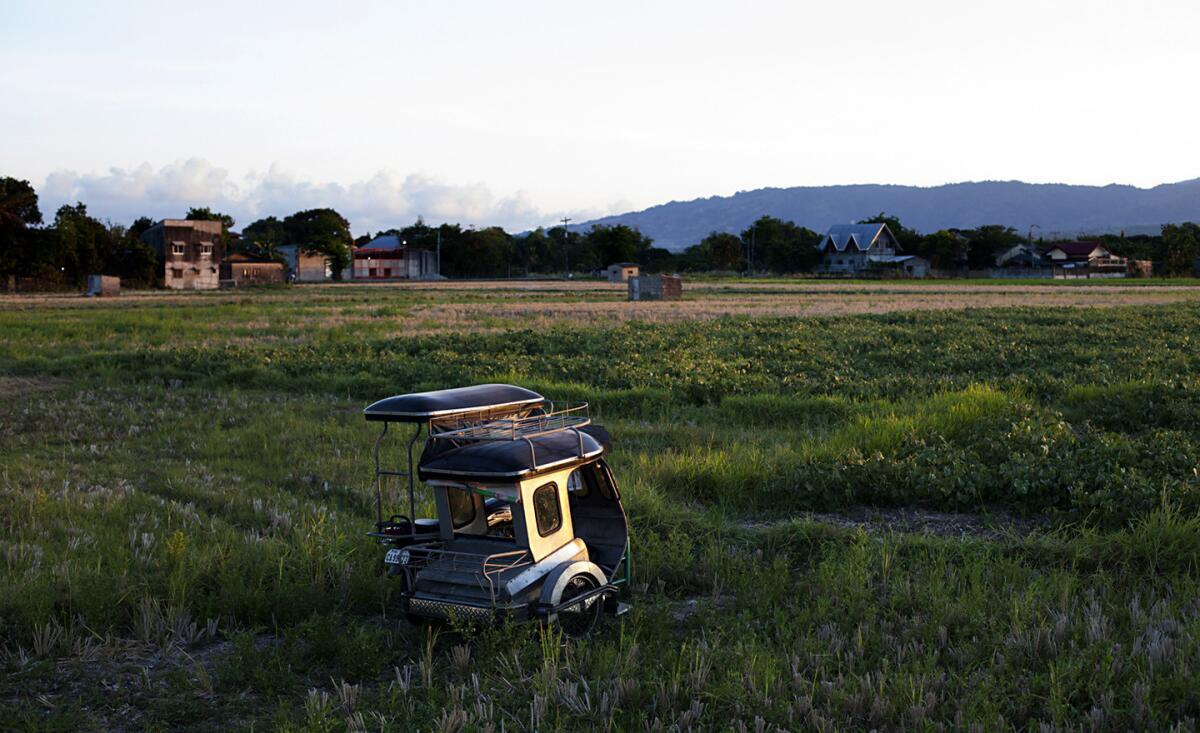Remembering the Bataan Death March 75 years later

- Share via
April 9 marked the 75th anniversary of the beginning of the Bataan Death March in the Philippines, in which tens of thousands of American and Filipino soldiers died during
The forced march came after the defeat of the Allied army in the Battle for Bataan, four months after the Japanese surprise attack on Pearl Harbor in Hawaii. At the time, the Philippines was a U.S. colony, and a combined force of about 120,000 Filipino and American troops had been fighting to keep the islands from falling to invading Japanese forces.
Without reinforcements or supplies, the Allied forces surrendered after four months. Many were wounded, sick or weakened by the long and bloody battle. The surrender is the largest recorded in Filipino and American history.

The march began on the Bataan Peninsula and stretched 65 miles northeast to a prisoner of war camp inland. Without adequate food or water and struggling through intense tropical heat and humidity, many prisoners died along the way. Rampant brutality and wanton killing by Japanese soldiers characterized the march. Many POWs suffered from dysentery and malaria, and the Japanese summarily shot, bayoneted or beheaded those too weak to push ahead. Of the estimated 80,000 POWs who began the Bataan Death March, about 54,000 survived the ordeal.
During a recent Fulbright fellowship to the Philippines, I documented the route of the Bataan Death March and tried to capture the essence of the soldiers who struggled, died or were lucky enough to survive. Memorials and markers commemorating the march dot the landscape and serve as reminders in the daily lives of many Filipinos. The trail is easy to follow.
I met a woman selling homemade food at a roadside stand and imagined that long ago, she could have been one of many trying to provide nourishment to the suffering POWs.
I came across a farmer drying his rice harvest along the road. He methodically raked grains and covered his head from the blistering sun.
I talked with Florentino Platero, a veteran who served as a post commander during the war and stills celebrates the Bataan Day national holiday, which is now called Araw ng Kagitingan, or the Day of Valor.
Echoes of WWII punctuate the lush Philippine landscape. A motorized tricycle parked in a field harked back to a scorching day long ago. Verdant mountainsides and rice paddies lined the route. A warm breeze blew through the fronds of a coconut palm, alone in a dusty field.
I had many miles to go. And straight ahead, the road rolled through the undulating heat.

Sign up for The Wild
We’ll help you find the best places to hike, bike and run, as well as the perfect silent spots for meditation and yoga.
You may occasionally receive promotional content from the Los Angeles Times.



